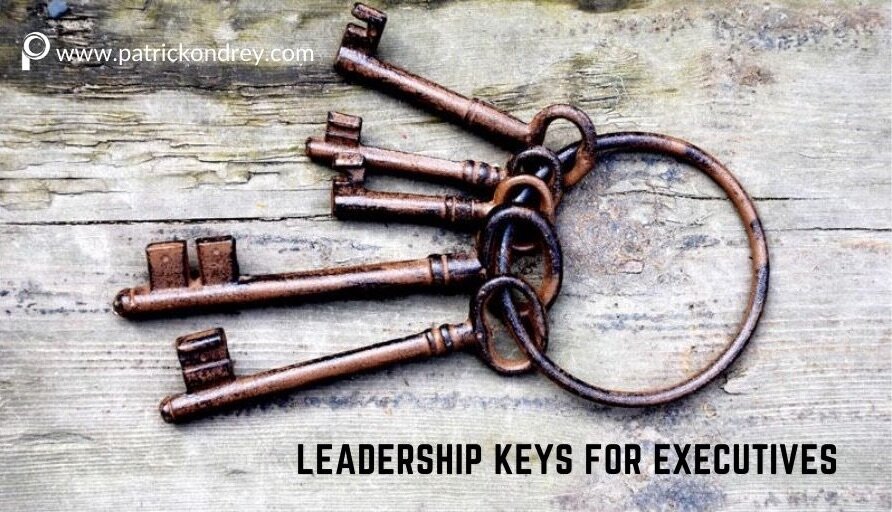Innovative disruption and constant change are challenges for every business in this digital age of organizational uncertainty. From artificial intelligence to shifting algorithms, technology has irrevocably altered the foundations of the workplace. Where does this phenomenon leave our captains of industry today?
While companies weather these sea-changes, senior executives are embracing agile management styles and reframing the way their companies do business. Business culture and leadership development impact long-term organizational performance, but it’s leadership strategy that drives it.
Whether you’re guiding and managing a team of executives or an executive yourself, consider the keys outlined here.
1. Think Like an Outsider
This piece of wisdom has many advocates who can explain why your next C-Suite level executive should come from outside your organization. There are sound reasons behind this thinking, but keep in mind I didn’t say you MUST bring in an outsider, just to think like one.
Why?
An outsider comes into an organization with the impartial insights needed for breakthrough moves. Coming from outside the business, they aren’t weighed down by organizational politics. An external leader is more likely to identify the need for far-reaching strategic moves such as organizational restructuring, and possibly even operational and financial restructuring.
The outsider isn’t afraid of bold, aggressive tactics. They have the board, their colleagues, and numerous other stakeholders to impress.
Inner agility is the flexibility needed to step away from stale, old patterns and gain new insights. Anyone can think like an outsider if they have the right mindset.
2. Build Strategic Momentum
Building and maintaining constant strategic momentum isn’t rocket science; it’s a commitment to effectual change. While high-performance executives are known for making more strategic moves during their first year on the job, C-Suite level executives with longer tenure are less inclined toward radical action.
As an example, new executives can use strategic actions to deliver momentum, although the rate of transactions tends to dwindle after the first year or two. Even simple initiatives, such as a cost-reduction program, are more likely to be initiated by high-performance executives.
Missed opportunities can represent significant losses for the organization. When organizations follow a methodical program, they tend to do better than those with no defined strategy.
For a clear view of their company’s weaknesses and strengths, high-performance executives know that a regular strategic review will give them a realistic perspective.
3. Conduct Strategic Reviews
Conducting strategic reviews is an essential factor in mapping out the initiatives and actions that drive an organizations growth and even a change of direction. Traditionally, the thought of a strategic review is daunting, but the process is key to planning forward strategy.
By analyzing and evaluating the current state, executives get the best view of how the business can move ahead. A thorough strategic review will answer the following questions:
Where is the organization at now?
Where can the organization get to?
Where should the organization aim?
How can the organization get there?
Each stage builds on the others. The first step establishes a baseline – “what should be done and why.” The second step identifies strategic possibilities. In the third step, all or some of these possibilities are chosen for action, and the last step involves developing a working plan to initiate those actions.
Using this information, targets are set, and metrics for measuring success can be defined.
The complete profile of the organization is effectively laid out openly to all key decision makers, giving the executive leadership knowledge of the deep workings of their organization.
4. Share Your Vision
Effective executives know lasting performance is driven by a focus on leadership strategy.
With the climate of disruption infiltrating every aspect of organizational culture, the “tone” from the top has become an essential factor. When applied to any organizations culture, the “tone” from the top refers to how well senior leaders communicate their embodiment of the organization’s ideals and values.
By sharing your vision with those you lead, you translate it into action. Everyone needs a purpose and a vision – inspired team members are motivated team members. They’re no longer just working; they’re working together towards a shared goal.
As a leadership strategy, following a clear vision gives you and your team a benchmark. When anyone asks, “Where are we going?” Your vision gives the answer.
This long-term leadership strategy communicates your clear, inspirational belief in the future of your organization.
5. Create Balance While Building Culture
Organizational redesign seems to be a vital component of the effective executive’s toolbox. But high-performing C-Suite level executives are less likely to wade into management reshuffles early in their tenure. In the light of major strategic reevaluation, significant strategic shifts usually come before any internal redesign.
Because every organization operates within its own context, an effective leader will conduct the vigorous strategic review needed for an informed outlook before committing to a strategic direction. High-performance individuals may set the tone from the top and define the organizational balance, but the strength of the culture will define the elasticity of the organization and its ability to adjust to significant changes.
While sharing the vision can help bring alignment within the organization it doesn’t set the tone for the core values of your organization. Ensuring teams not only understand what you do, but why you do it, and establishing a shared belief system that gives your team a “reason to believe” is an imperative. When teams have periods of uncertainty, are unnerved by the change around them, it’s their belief in the culture that the leaders have set that will help them stay committed to the organization and to helping execute any changes.
Final Thoughts
Great C-Suite executives aren’t born; they’re made. There isn’t a school where you can get an MBA in being a C-Suite executive. This is one role where you effectively learn as you go, and your prior successes and failures are of equal value.
Suzy Wetlaufer and Charles M. Farkas point out in Harvard Business Review that “very good leaders repress certain personality traits, or develop ones they weren’t born with, in order to run their organizations effectively.”
High-performance executives study the organizations situation and identify what it needs from its leader. They then adapt their approach to the organization they lead. This is the crux of effective C-Suite level leadership.

